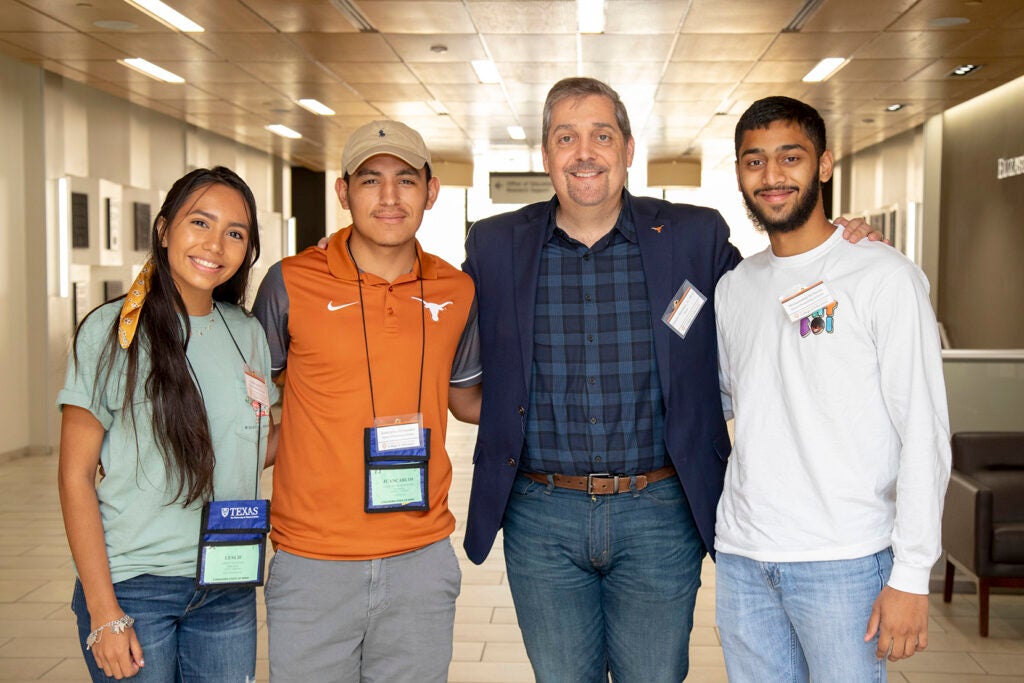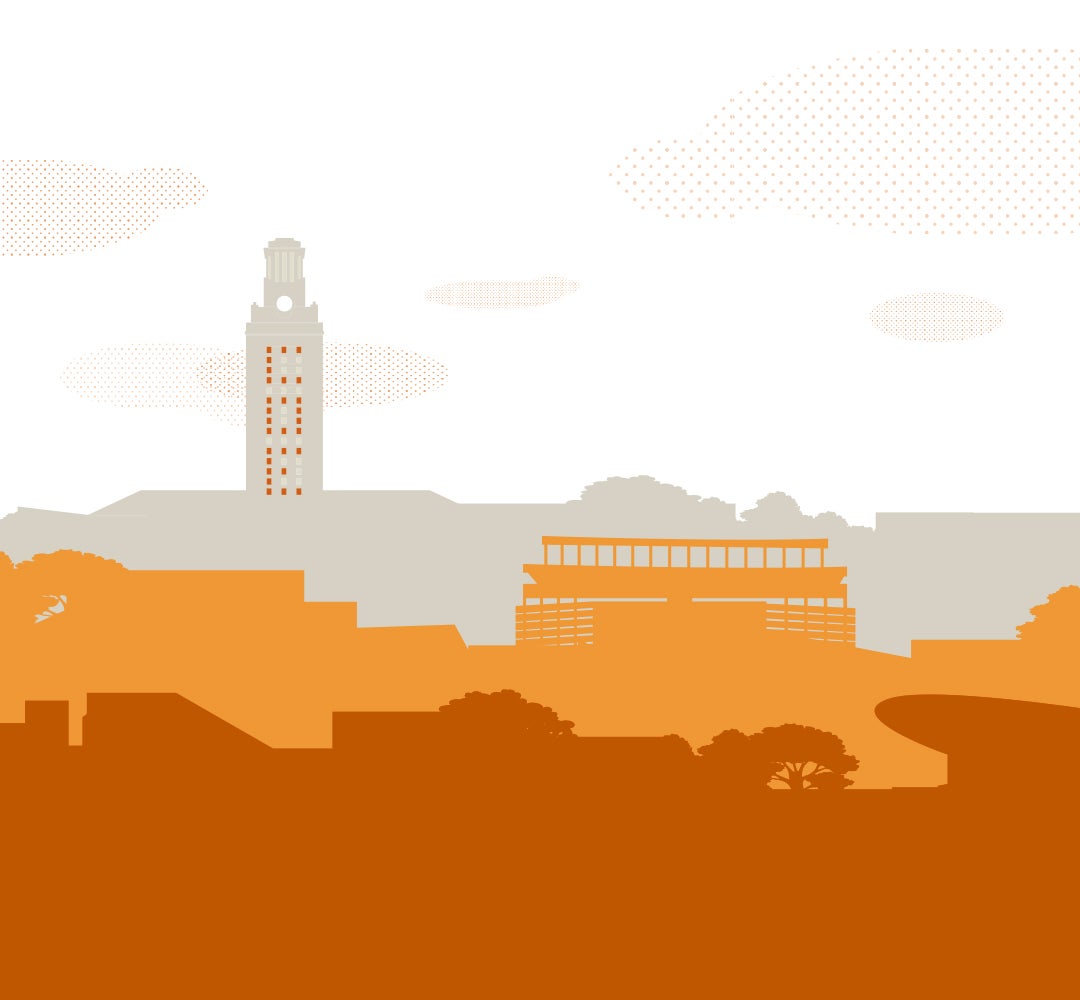
Charles R. Martinez Jr. joined the College of Education January 1, 2019, as our 12th dean. He came to The University of Texas at Austin from the University of Oregon where he was the Philip H. Knight Professor in the Department of Educational Methodology, Policy, and Leadership, and director of the Center for Equity Promotion. In Oregon, Dean Martinez also served as the University of Oregon Vice President for Institutional Equity and Diversity for seven years, was a locally elected school board member, and served as chair of the Oregon State Board of Education. An avid researcher, Martinez also enjoys traveling with his wife, Leslie, and their son, Andrew, is a commercial pilot and flight instructor, and has run every day for more than nine years. Martinez holds the Lee Hage Jamail Regents Chair in Education and the Sid W. Richardson Regents Chair.
UT and our College of Education are world-class settings and that was certainly part of the draw. But, that would not have been enough for me to leave a great job in Oregon. Here in Texas, I’m struck by the unique opportunity to leverage the excellence of UT to make a real and lasting difference for students, families, schools and communities in a unique context and at a unique time in our nation. We’re in a moment in which we are asking fundamental questions about the needs of an education system that has failed too many students for too long. Texas is among the most important venues for these conversations and for efforts to fundamentally reform education, health and social service systems. Because of its size, and because of its rapidly changing demographics that mirror changes underway in the rest of the country, improving education and health outcomes for children and adults in Texas will impact the nation in profound ways.
As someone who was a first-generation college student, I have a deeply held belief in the transformative power of education to change lives. I feel a sense of urgency to address the longstanding opportunity gaps, and education and health disparities that persistently affect our most vulnerable students, families and communities. I can think of no better venue to move this sense of urgency into bold action than the College of Education at UT Austin.
If you think about schools as one of the important venues for our work in the college, we must recognize that when children—and adults—arrive to school, teaching and learning do not occur in a vacuum. Students come to school embedded in place and context. They bring all of the strengths and challenges they encounter at home and in their communities with them when they arrive at school. Teachers, helping professionals and educational leaders must all be responsive to these circumstances. Truth is, we also must acknowledge that our educational system has failed too many kids, and especially those who are most vulnerable. We cannot afford to be a generically great college; we have to boldly declare the specific difference we will make for the state of Texas and beyond, and then organize ourselves around those areas of impact so that our words lead to actions.
The most pressing issue is to improve the quality of our education system in terms of how we serve students and families. This first begins with a focus on raising the excellence of educator preparation and elevating the education professions. On August 23, I penned an op-ed piece in the Austin American-Statesman about the persistent devaluing of teachers in Texas and in the nation. It’s time to change that. We need to reorganize our educator preparation and professional support efforts in a way that truly recognizes the critical role that teachers play in transforming lives. For too long, and particularly in Texas, our system has focused on just getting bodies in classrooms, rather than honoring and developing excellence among teachers, and creating the supports needed to keep great teachers in the profession.
A second major issue facing public education is how to implement evidence-based practices at scale in schools and in real-world settings. Work in our college and in colleges of education around the country has led to the development of many evidence-based interventions and programs that address the academic and social behavioral needs of students. So, the problem isn’t that we don’t have effective programs. The problem is that we don’t have effective systems to move these evidence-based interventions into real-world practice.
We haven’t spent enough time building cost-effective implementation models, understanding what makes interventions work, and considering how to best adapt the interventions we have developed to the unique cultural and linguistic needs of students, and the unique contexts of schools and communities. The other problem is that our educational system itself is often lured to chase the “next big thing” to improve outcomes in schools rather than maintaining a relentless focus on intervention approaches that match a particular need, with ongoing monitoring to ensure these approaches are maximally effective and sustainable.
Thirdly, and most importantly, public education continues to face major challenges related to ensuring equity in outcomes for all students. We continue to see vast disparities in access to education, and in success in education for vulnerable populations of students. Those disparities persist year after year, based on students’ social advantage or disadvantage, socioeconomic status of families, parent education, race/ethnicity, gender, whether you grew up in a rural or urban setting, special education status—things that have no business predicting educational success. Inequities in the system are the biggest—maybe the single biggest—problem facing public education. We observe disparities for vulnerable populations of students in terms of grades and student achievement, but also in terms of broader school factors such as discipline referral, school suspension/expulsion, access to state-of-the-art STEM education, and participation in higher education. Whether or not all of these disparities are of a school’s making, they most certainly are of their potential fixing.
We have the unique capacity to develop, test and implement interventions that can lead to lasting changes for students and schools. Moreover, in our academic programs we have the unique responsibility to train educational and health professionals and leaders who are capable of interrupting the factors that impede student success, and to realign the system to serve all kids.
Honestly, deepening our connections to communities and schools is among our most important priorities. Although I invest lots of energy into thinking about UT and our college, what gets me motivated each day is thinking about how we can leverage the strengths of our college to better serve the 8 million children in Texas, the 5.5 million kids in K-12 in the state, the 2 million kids who have yet to enter the system, and the hundreds of thousands of kids who have been set out of an educational system that wasn’t prepared to meet their needs. In the College of Education, we don’t have the luxury of studying things just because they’re interesting, although we study many interesting things. We must direct our scholarly work and programmatic activities toward efforts that have the promise of making a difference for students, families, schools, communities and individuals. We have an urgency to do work that can make a difference, and that means we have to orient ourselves to what the real world needs from us. To do this, we must engage deeply with our partners of practices in schools and other settings to better understand the most pressing needs, and then align ourselves to meet these needs. That work often doesn’t come naturally to universities.
For one thing, being in academia has allowed me to combine my love for teaching, research and clinical practice in a way that I could never replicate in another setting. More fundamentally, I have deep belief in the true power of higher education, particularly public higher education, to change lives.
Sadly, most of my runs have occurred during the early morning, often in the dark, and near my home without exciting scenery. That being said, I have enjoyed running the Ann and Roy Butler Hike-and-Bike Trail near and around Lady Bird Lake. I also enjoy the complex trail system at Walnut Creek and also further north at Brushy Creek. I recently discovered that you can also run at the Lady Bird Johnson Wildflower Center. You have to make some circles if you want to go for a long run, but it’s gorgeous out there.

